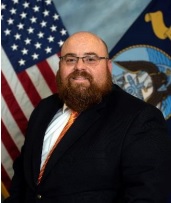National Harbor, Md. – A Navy official said the service is pushing to increase the number of metallic 3-D, or additive manufacturing (AM), produced parts fielded on submarines to about 100 by the end of the year.
“We are progressing, we have permanently installed parts on submarines now, a couple. I’d like to have a hundred and we have a couple. I think we’ll be near 100 by the end of this year and we’ve got a bunch of them in progress,” Matt Sermon, executive director at Program Executive Office Strategic Submarines said here April 10 during a panel at the Navy League’s annual Sea Air Space conference.
Sermon argued he thinks additive manufacturing is a “pivotal topic for the Navy and the nation,” partially because the U.S. is not the kind of manufacturing country it was 40 years ago.

In order to produce and maintain the current and future submarines, “we must have advanced manufacturing of all types and additives,” he said.
Sermon underscored the Navy and industry are focused on being able to manufacture parts that use six key alloys, which in turn cover almost 30,000 parts on submarines.
This echoed a similar point he made in early 2023, that six materials account for about 70 percent of Navy submarine links, which cover parts like ballast fitting and fasteners. At the time, Sermon said if the metallic additive manufacturing is improved enough with the six alloys, it could lead to upwards of an 80 percent or more reduction in the submarine construction schedule (Defense Daily, Jan. 31, 2023).
However, at that time he said the metallic AM research was progressing such that there was a plan to mature the six key materials to be ready for mainstream production by March 2024.
That point did not seem imminent in his statements this week, with such “moon shot” level research still underway.
Sermon said while the Navy is progressing on AM work for low severity parts, “we are not there yet at the sea pressure, sub state-level part. We are not there yet. The key to that is material maturity of those six alloys, and that is an all hands on deck evolution, where we have some moonshots right now in Oak Ridge Tenn.”
He assured the audience that they are currently printing a sub-state part there which they plan to destructively and non-destructively test in a rigorous process.
“Testing warrant holders have put in place a very rigorous test process for high strength steel and for nickel-aluminum bronze to better understand, to get us to that point where when I hit the button on that machine, that I’m confident what comes out later meets the quality , fatigue, corrosion standards of the submarine community.”
Sermon emphasized while the production process is different, requiring some different testing, “we don’t sacrifice technical rigor, we will not sacrifice technical rigor. What we are demanding is technical agility and the ability to take on requirements, and the ability to think differently about destructive and non-destructive testing, because the way we’re going to print parts doesn’t even match pouring molten metal on sand, in terms of how we think about quality.”
He also noted the importance of the Navy’s Additive Manufacturing Center of Excellence in Danville, Va., which opened in 2022 (Defense Daily, Oct. 6, 2022).